Using a paint sprayer can make your projects faster and more efficient, but it’s easy to stumble into some common pitfalls along the way. This guide breaks down the 12 mistakes you definitely want to avoid, helping you achieve that smooth, professional finish without any headaches. Let’s get right into it!
Overlooking Environmental Conditions
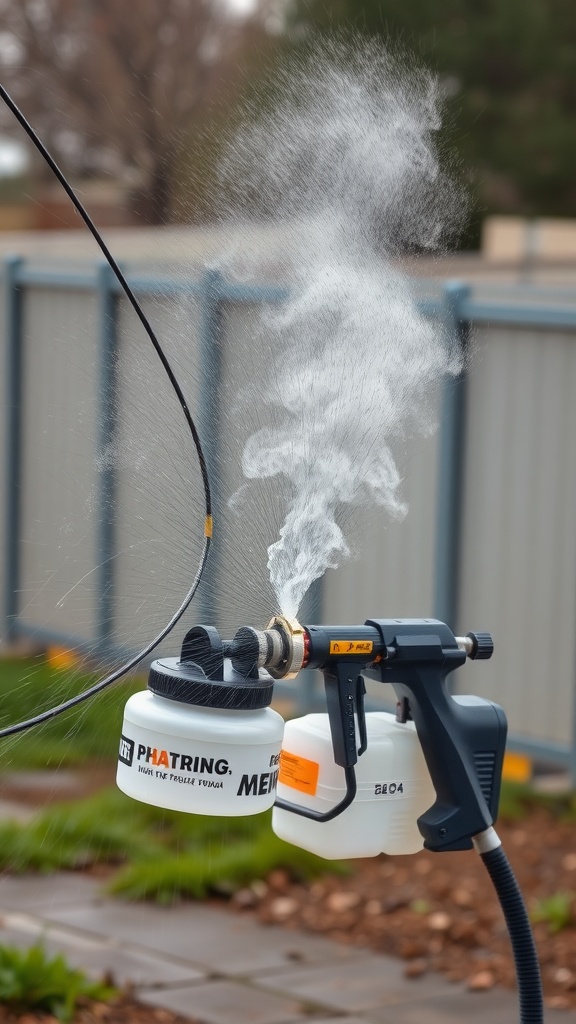
When using a paint sprayer, many people forget to check the environment around them. The image shows a sprayer in action, creating a fine mist of paint. This mist can behave differently depending on wind, humidity, and temperature.
Ignoring these factors can lead to uneven coverage and wasted paint. A light breeze can carry the mist away from your target surface, leaving patches behind. High humidity can make the paint dry slowly, resulting in drips and runs.
Pay attention to the weather before starting your project. If it’s windy, consider moving indoors or waiting for calmer conditions. Choosing the right day can make all the difference in achieving a smooth finish and avoiding common paint sprayer mistakes.
Using Incompatible Paint Types
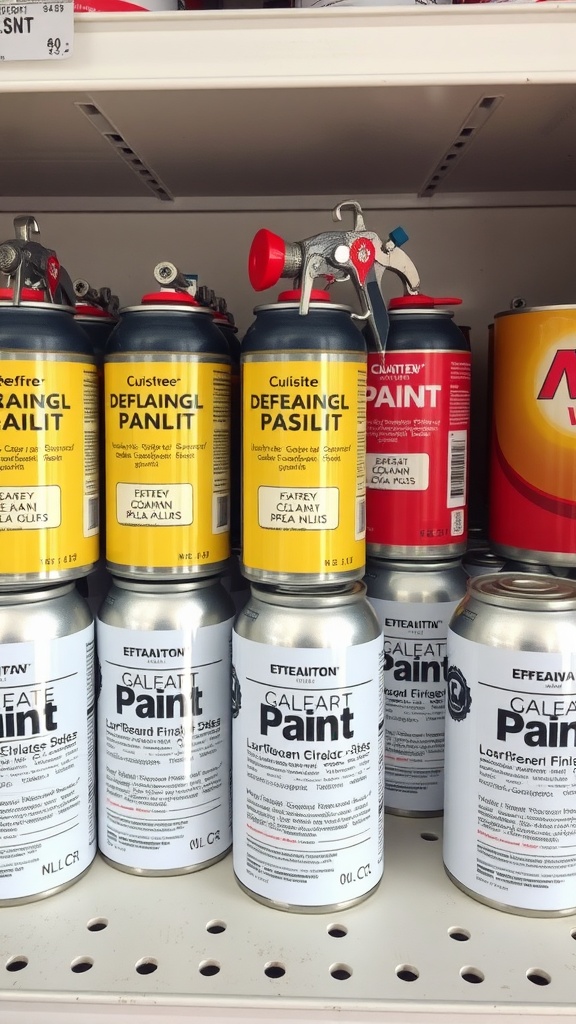
Choosing the right paint for your sprayer is key. The image shows various paint cans that highlight this issue. Each can is labeled differently, indicating that not all paints are created equal.
Using incompatible paint types can lead to a messy result. If you try to spray a thick paint with a sprayer meant for thinner substances, you might end up with clogs. This can ruin your project and waste paint.
Always check the compatibility of your paint with your sprayer. Look for the recommended types and dilutions on both the paint can and the sprayer manual. This simple step can save you lots of time and hassle.
Using the Wrong Nozzle Size
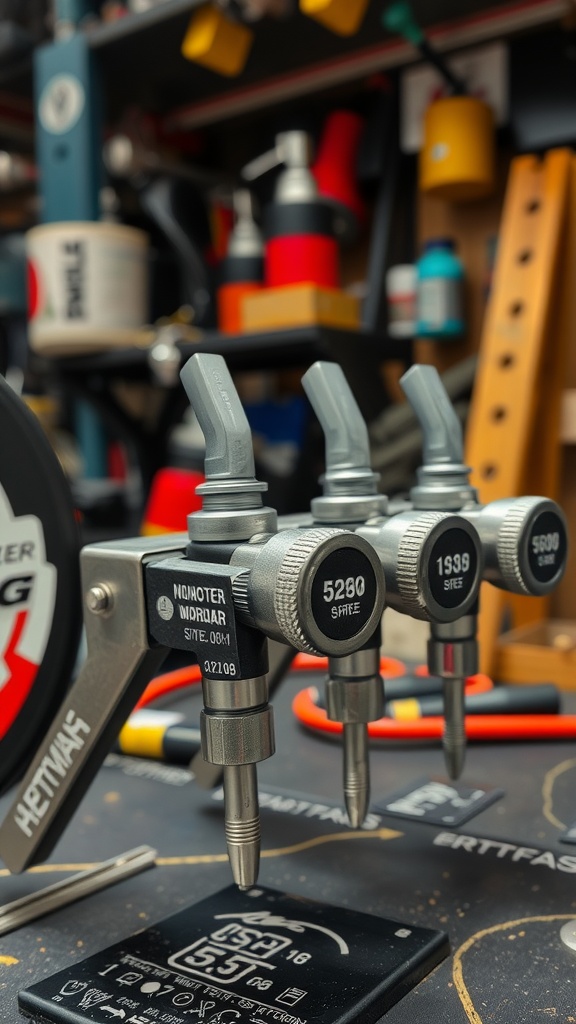
Choosing the right nozzle size for your paint sprayer is key to achieving that flawless finish you want. In the image, you can see a selection of nozzles lined up, each marked with different sizes. This visual serves as a reminder that not all nozzles are created equal—it’s easy to overlook this detail.
If you pick a nozzle that’s too large, you risk overspray and a messy application. On the flip side, a nozzle that’s too small can lead to clogging and a frustrating painting experience. Understanding the specifics of your project can help you select the right nozzle size.
Remember, using the right nozzle is one of the most common paint sprayer mistakes. So before you start painting, take a moment to consider which nozzle will work best for your needs. It can make a world of difference!
Not Prepping the Surface Properly
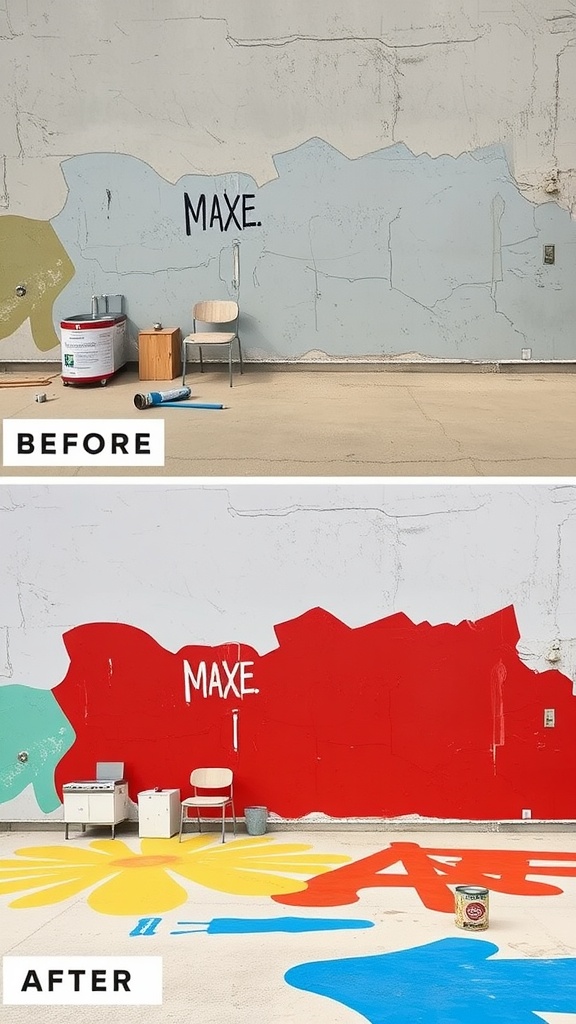
Every paint job has its starting point, and that’s the surface prep. The image shows a clear transformation from a dull, uninviting surface to a vibrant, colorful wall. This change highlights just how crucial it is to prep a surface adequately before using a paint sprayer.
The ‘before’ section reveals a wall with peeling paint and a chaotic mix of colors. Without proper preparation, you risk ending up with a messy finish. The ‘after’ section, however, showcases a stunning display of color, achieved only after the necessary groundwork was laid.
When you skip surface prep, you may find your paint peeling or chipping away sooner rather than later. This leads to more work down the line, which nobody wants. So, take the time to clean, sand, and prime the surface before reaching for your sprayer.
Poorly prepared surfaces are one of the most common paint sprayer mistakes. Remember, a great finish starts with a solid foundation!
Not Wearing Protective Gear
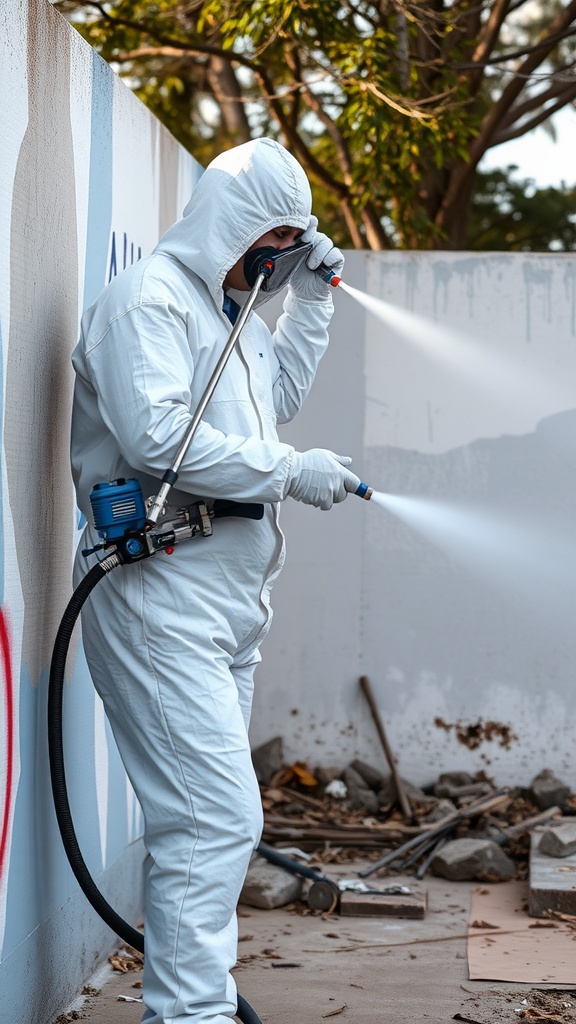
When using a paint sprayer, safety should be your number one priority. The image shows a person in protective gear, which highlights the importance of taking precautions. Skipping this step can lead to serious health issues.
Paint sprayers release fine mist particles that can be harmful if inhaled. Wearing a mask protects your lungs from these toxins. Eye protection also prevents irritation from overspray. It’s easy to think, ‘I’ll be careful,’ but accidents happen.
The right clothing is just as crucial. The person in the image is wearing a full-body suit. This helps keep paint off your skin and reduces contamination. Remember, messy hands can be a hassle and can cause skin reactions.
For beginners, it might be tempting to forgo the gear to save time. However, ignoring protective measures is one of the biggest paint sprayer mistakes you can make. Taking a few minutes to suit up can save you from a lot of trouble later.
Ignoring the Paint Thinning Process
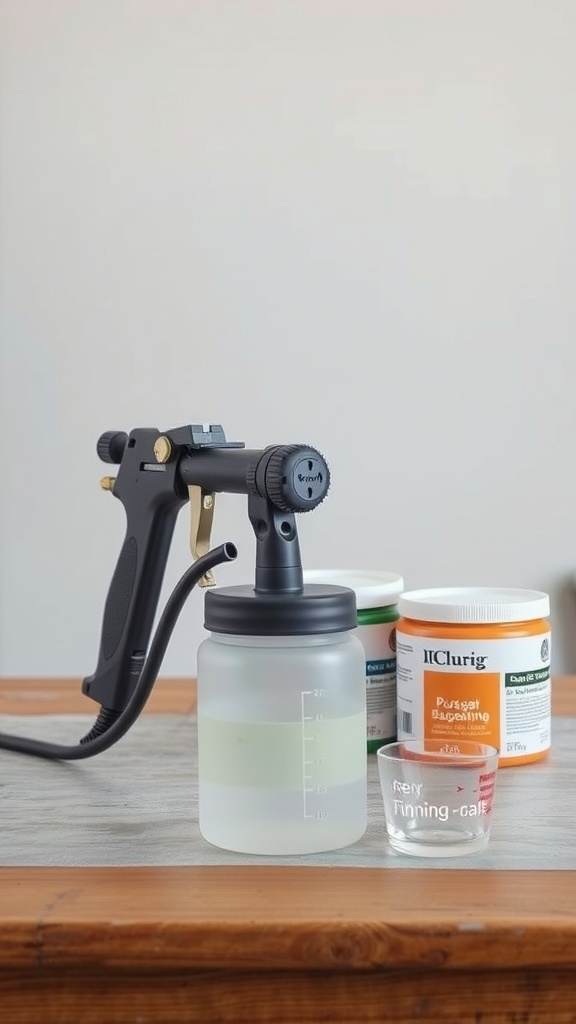
When using a paint sprayer, one mistake that often gets overlooked is skipping the paint thinning process. The image shows a paint sprayer with a clear container and various paint products nearby. This setup emphasizes the importance of having the right consistency before spraying.
Thinning paint is vital for achieving a smooth finish. If the paint is too thick, it won’t spray evenly. This can lead to uneven coverage and visible brush strokes, which nobody wants on their freshly painted surfaces.
Many beginners underestimate how much paint needs to be thinned. Each type of paint has its own requirements. For instance, latex paints often require water, while oil-based paints need mineral spirits. Always check the manufacturer’s guidelines for the best results.
Another key point is to mix the paint thoroughly after adding the thinner. This ensures that the mixture is consistent throughout, preventing any clogs in the sprayer. If you find your sprayer having issues, it might just be that the paint is not thinned out enough.
In summary, ignoring the paint thinning process can lead to a range of headaches. Whether you’re a novice or a seasoned pro, take the time to prepare your paint correctly. Avoiding this simple step can save you time and frustration down the road.
Failing to Test Spray Patterns
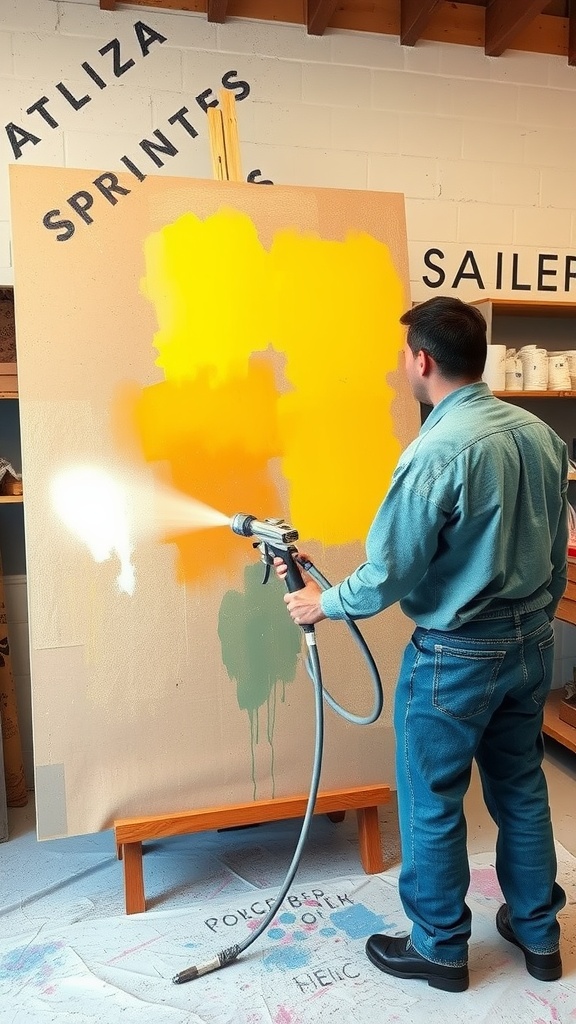
One common mistake when using a paint sprayer is skipping the test spray. The image shows a person using a sprayer on a canvas, demonstrating the importance of checking how the paint comes out. This step is crucial.
Testing spray patterns helps you see how the paint flows and adheres. Without this, you might end up with uneven coats or drips, ruining your project. The sprayer should evenly distribute the paint for a smooth finish.
In this scenario, it’s clear that the user is focused on testing different colors. Doing so allows for adjustments before tackling the main project. Remember, before spraying your walls or furniture, make sure to practice on a scrap piece of material.
Learning from these paint sprayer mistakes can save time and frustration. Don’t overlook the test spray; it’s a simple step that makes a big difference in the final outcome.
Neglecting to Clean the Sprayer
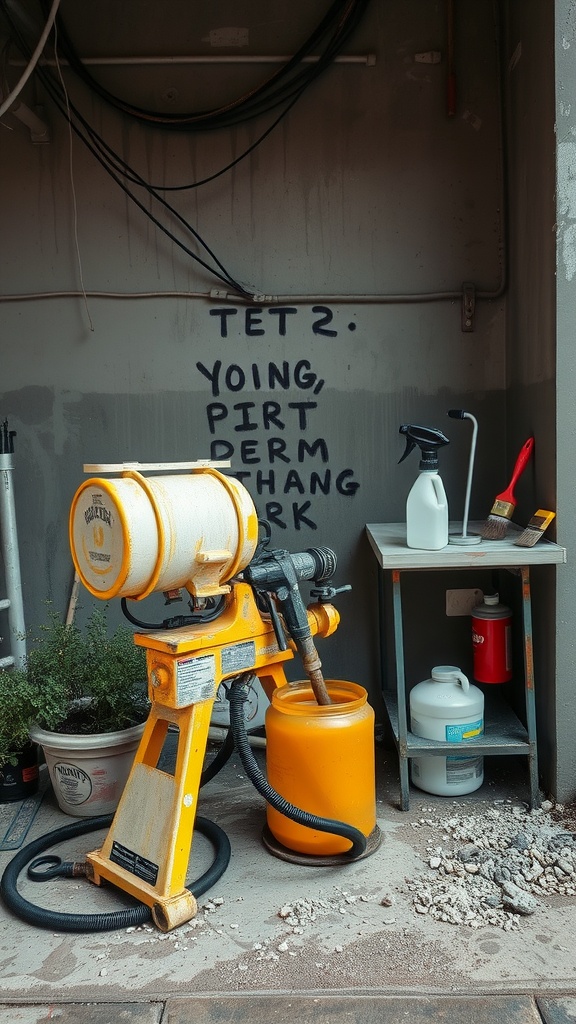
When using a paint sprayer, cleaning is often an afterthought. Our image here shows a sprayer that looks like it’s been through quite a bit. Notice the dust and debris around it? That’s a telltale sign of neglect.
Failing to clean your sprayer can lead to clogs and uneven spraying. Paint residue can harden and ruin your equipment. This image highlights the importance of regular maintenance. It’s not just about getting the job done; it’s about taking care of your tools.
In the hustle of painting, it’s easy to overlook cleaning. A quick rinse after use can save you time and money down the line. So, don’t let your sprayer end up like the one in this photo. Make cleaning a priority.
Skipping the Primer Step
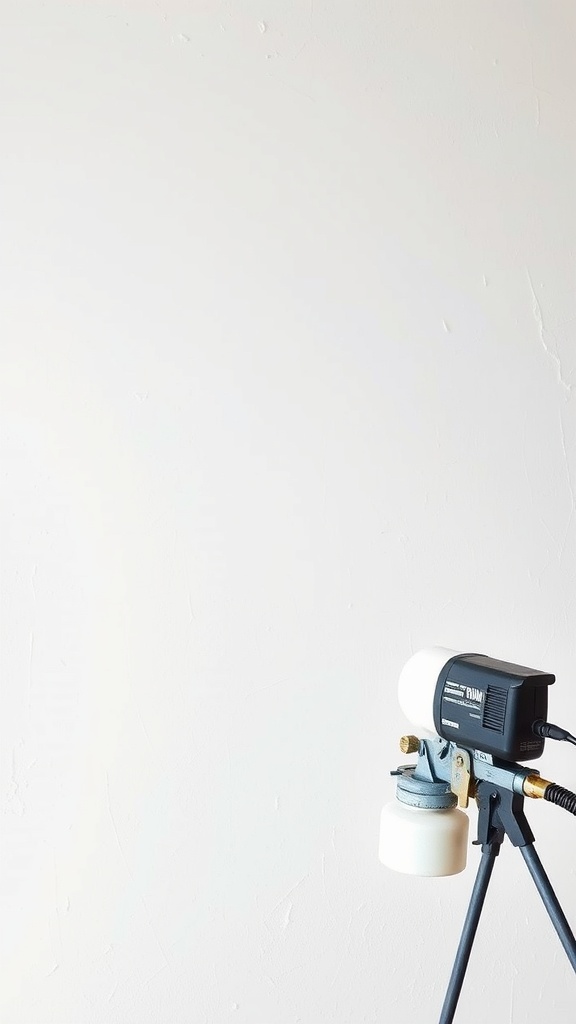
Using a paint sprayer can make any project feel like a breeze, but skipping the primer step is a mistake you want to avoid. Primer helps create a smooth base for your paint, ensuring better adhesion and a more vibrant finish. It’s like laying the groundwork before building a house; you wouldn’t skip that, right?
The image shows a paint sprayer set up and ready to go, sitting against a blank wall. This is the perfect scenario to start a project, but remember: before you spray that first coat of color, take the time to apply primer. It may feel like an extra step, but it pays off in the long run by saving you from issues like peeling or uneven color.
If you’re eager to see those beautiful colors pop, think of primer as your best friend. It helps the paint look its best every time. Make sure to choose the right primer for your surface, whether it’s wood, drywall, or metal, and you’ll find that your paint job turns out much better. Avoiding this important step is one of the biggest paint sprayer mistakes you can make!
Not Following Manufacturer Instructions
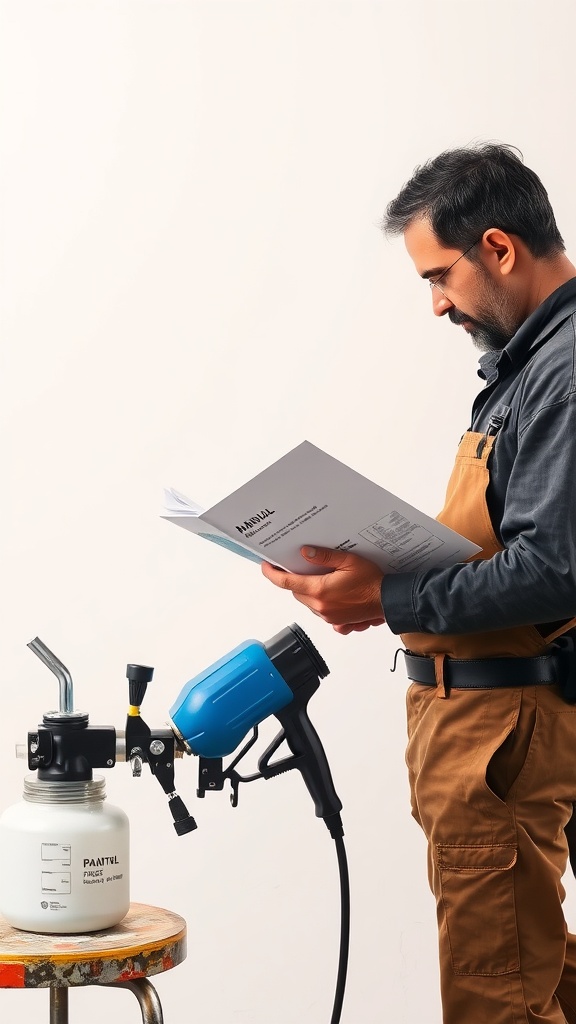
When using a paint sprayer, one of the biggest slip-ups you can make is not following the manufacturer’s instructions. The image here shows a person carefully reading the manual while preparing the sprayer. This step is essential for a successful painting job.
Manufacturer instructions are packed with valuable information. They guide you on setup, operation, and maintenance, ensuring you use the sprayer effectively. Ignoring these can lead to frustration, wasted paint, and even damage to the equipment.
Each paint sprayer has unique features and specifications. What worked for one model might not work for another. So, take the time to read through the guidelines. It’s a simple way to avoid common paint sprayer mistakes.
Investing a few minutes in understanding your tool can save hours of headache later. Always check the manual before you start spraying!
Holding the Sprayer Too Close
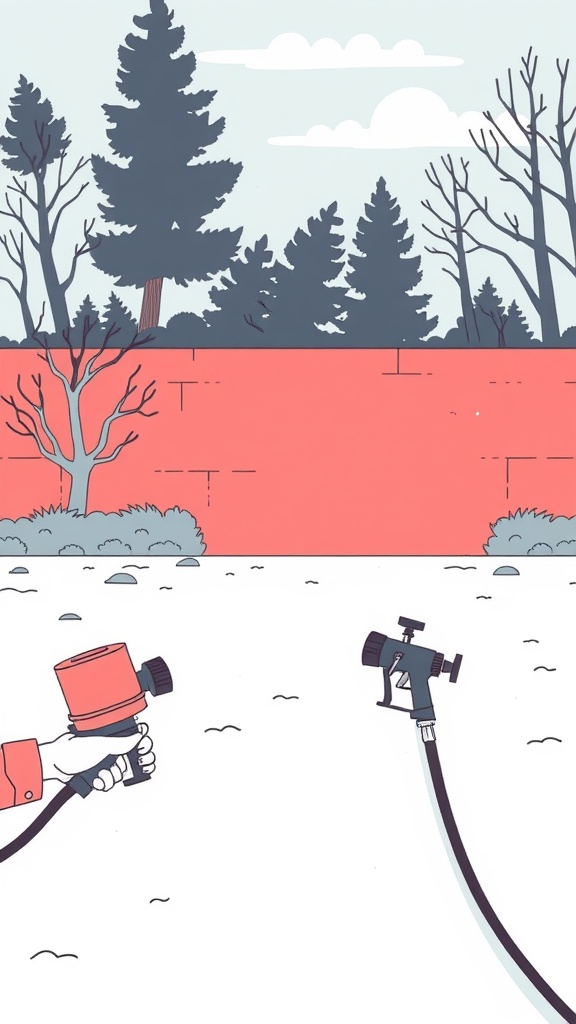
One common mistake when using a paint sprayer is holding it too close to the surface. This can lead to several issues, including uneven coverage and excessive paint buildup.
The image shows a sprayer in one hand, positioned near the surface, while another sprayer is shown further away. This visual contrast highlights the difference in distance that can affect your project’s quality.
If you aim too closely, the paint can drip and create an unsightly finish. The goal is to maintain a steady distance, typically around 12 to 24 inches, depending on the type of paint and sprayer you’re using.
To avoid this mistake, practice your technique. Test on scrap material to find the right distance. This way, you can enjoy a smooth application without the frustration of do-overs!
Rushing the Painting Process

When it comes to using a paint sprayer, one big mistake many make is rushing the painting process. The image here captures the essence of taking your time. The wall is painted in soft, calming colors while the bright, bold letters shout for attention. This contrast reminds us that patience can lead to stunning results.
Skipping steps or hurrying along can lead to uneven coverage, drips, and an overall lackluster finish. A well-done paint job stands out, just like the vivid letters on that wall. Each layer needs attention and care.
Make sure to prep your surface properly, choose the right materials, and allow for adequate drying time. If you try to speed things up, you might end up regretting it later. Embrace the process! Enjoy the art of painting and remember that good things take time. Avoiding these paint sprayer mistakes will lead to a result you can be proud of.

